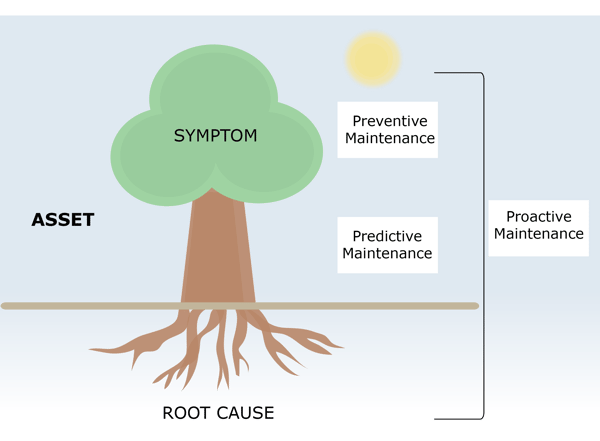Thus far, we had several discourses about reactive maintenance, predictive maintenance and preventive maintenance. Today, we will look into the most comprehensive maintenance yet- Proactive maintenance.
What is Proactive Maintenance?
Proactive maintenance, akin to predictive and proactive maintenance, is designed to extend the life of mechanical machinery. It is a strategy for maintaining the reliability of machines or equipment. The purpose of proactive maintenance is to view machine failure and similar problems as something that can be anticipated and dealt with before they occur.
In other words, rather than servicing a machine when issues arise or parts need replacing, maintenance and/or replacement takes place when data indicates that degradable parts are nearing the end of their life cycle, the work is then scheduled for a time which best matches your workflow to further minimize disruption.
But wait...
Proactive maintenance sounds exactly like a combination of predictive and preventive maintenance, how does it make it the most comprehensive maintenance program yet?
In fact, predictive and preventive maintenance are a part of proactive maintenance, and it goes beyond that. In predictive and preventive maintenance, they often only pay attention to repairing machines or being effective in performing corrective actions on machines that show signs of problems. Instead, proactive maintenance takes a further step and focuses on eliminating the root cause of the issues. Emergency work is really costly, so by recognizing and eliminating the root causes, asset failures due to these causes can prevent emergency work.

Thinking of Implementing Proactive Maintenance?
The transition from reactive to proactive maintenance is not an easy feat. It will be a long and drawn-out process. Stating a proactive maintenance program method typically follows established predictive maintenance, preventive maintenance and proactive maintenance strategies. Therefore, it is important to grasp these methods before proceeding to implement proactive maintenance into your operation.
One of the ways to shift to proactive maintenance is to provide education and training to technicians and engineers on what to look for and why. It is essential for them to know the root causes that lead to the most of asset failures, what they look like and why it is important to rectify the issue at this particular stage. For example, the root cause of a gearbox problem may be due to the lack of lubrication. This is extremely easy to do and by carrying out a brief training, it could prevent disastrous failure of the component and everything associated with a breakdown.
It's not one size fits all
Again, it is stressed that not all programs fit a perfect mold. Each program needs to weigh in the pros and cons. For instance, it only make sense to implement reactive maintenance for a cheap component that is easily changeable and readily available in part of a non-critical process. The ideal program will be able to use a variety of maintenance modes to make sure your asset operates at its optimal performance. Understanding the different maintenance concepts and having an excellent grasp of operations will be essential in adopting a balanced approach at your asset. The only way you can optimize your method is where all the variables are fully comprehended.
At SLS, we provide customized maintenance solution that best fits your industry. As SKF's Certified Maintenance Partner, Our highly trained team at SLSPRO can assist you in reaching your maintenance goal.







